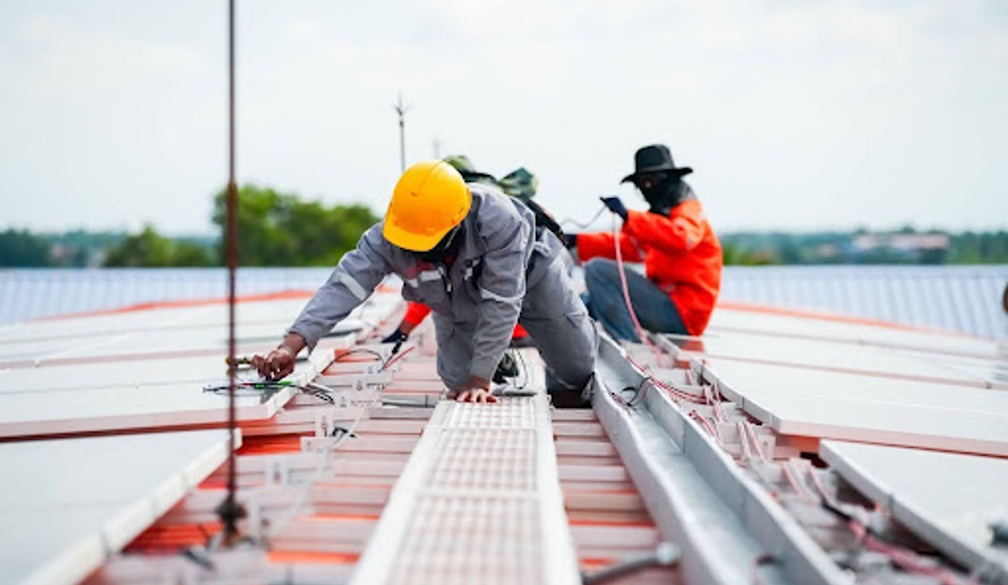What Are Roof Safety Systems? A Complete Guide

Working at heights comes with serious risks. Falls from roofs are one of the leading causes of workplace injuries and fatalities. That’s why roof safety systems are essential for anyone who works on rooftops, whether it’s construction workers, maintenance crews, or inspectors.
These systems are designed to prevent falls, restrict movement, or arrest a fall if it happens. Let’s dive into the different types of roof safety systems, how they work, and why they are crucial for workplace safety.
Types of Roof Safety Systems
Roof safety systems can be grouped into three main categories. Fall prevention, fall restraint, and fall arrest. Each system serves a different purpose depending on the level of risk and the type of work being done.
1. Fall Prevention SystemsThese systems stop workers from being exposed to fall hazards altogether. They are the most effective and should be the first choice whenever possible.
Guardrails are permanent or temporary barriers installed around roof edges to prevent falls.
Roof walkways create designated walking paths with anti-slip surfaces to keep workers safe.
Skylight protection includes covers or barriers installed over skylights to prevent workers from falling through.
2. Fall Restraint SystemsFall restraint systems allow workers to move around safely while preventing them from reaching hazardous areas.
Anchor points are secure locations where workers attach their safety harnesses.
Safety harnesses and lanyards are full-body harnesses attached to secure anchor points to keep workers within safe areas.
Static lines are horizontal lifelines that allow movement while keeping workers safely restrained.
3. Fall Arrest SystemsWhen fall prevention and restraint aren’t possible, fall arrest systems minimize injury by stopping a worker in mid-air.
Shock-absorbing lanyards are designed to slow down and reduce impact if a fall occurs.
Self-retracting lifelines automatically lock when a fall happens, preventing free fall.
Roof anchor systems are secure points where fall arrest gear is connected.
4. Roof Access SystemsThese systems ensure safe access to rooftops before any work begins.
Roof hatches and ladders provide secure entry points that allow safe rooftop access.
Access platforms include sturdy walkways or steps for safely reaching elevated areas.
Key Components of a Roof Safety System
A proper roof safety system includes a combination of equipment to provide maximum protection.
Harnesses and lanyards are worn by workers to keep them secured to the system.
Lifeline systems can be permanent or temporary and allow movement while ensuring safety.
Anchor points are strong, tested locations on the roof where safety gear is attached.
Personal protective equipment for working at heights includes helmets, gloves, and non-slip footwear to add an extra layer of safety.
Regulations and Compliance for Roof Safety
In Australia, roof safety systems must comply with strict workplace safety regulations.
AS NZS 1891 governs fall protection equipment and usage.
AS NZS 1657 covers safe access systems like walkways and ladders.
Work Health and Safety WHS regulations require employers to eliminate or control fall risks.
Businesses and building owners are responsible for ensuring that proper safety measures are in place and that workers are trained in height safety.
Choosing the Right Roof Safety System
The best system depends on factors like roof design, frequency of use, and the type of work being done.
For short-term jobs, temporary guardrails or static lines work best.
For regular roof access, permanent walkways, guardrails, and fixed anchor points are ideal.
For high-risk tasks, a combination of fall arrest gear and training is essential.
Inspection and Maintenance of Roof Safety Systems
Even the best safety system is useless if it’s not maintained. Regular inspections help prevent failures and ensure ongoing compliance.
Check anchor points for wear and tear.
Inspect harnesses and lanyards for frayed or damaged straps.
Test lifelines and retractable fall arresters regularly.
Keep walkways and guardrails clear of obstructions.
Conclusion
Roof safety isn’t optional. It’s a legal and moral responsibility. Investing in the right roof safety systems not only protects workers but also prevents costly accidents and liability issues.
Before stepping onto any roof, ensure the proper systems are in place, equipment is inspected, and workers are trained. A safe workplace starts with proper planning and the right safety measures.











